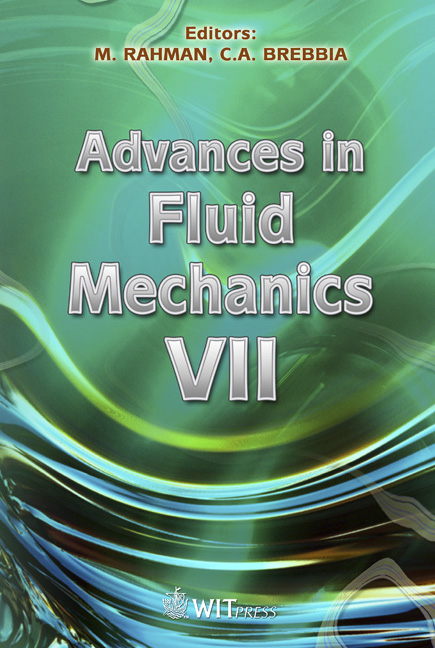A Numerical And Experimental Study Of A Thin, High Cambered Airfoil At A Low Reynolds Number
Price
Free (open access)
Transaction
Volume
59
Pages
10
Page Range
181 - 190
Published
2008
Size
627 kb
Paper DOI
10.2495/AFM080181
Copyright
WIT Press
Author(s)
A. Auletta, F. De Gregorio, D. Guida, M. Lupo & M. Marrazzo
Abstract
A numerical and experimental study of a thin, high cambered airfoil at a low Reynolds number A. Auletta1, F. De Gregorio1, D. Guida1, M. Lupo2 & M. Marrazzo1 1Italian Aerospace Research Centre (CIRA), Italy 2University of Rome \“La Sapienza”, Italy Abstract In the framework of the development of new aerodynamic design concepts, a joint numerical/experimental analysis has been performed on a 2D thin, high cambered airfoil at a low Reynolds number. The experimental investigation has been performed by means of the Pressure Sensitive Paint Technique (PSP) and Particle Image Velocimetry (PIV). These techniques have been selected for their characteristics of low-intrusivity and high spatial resolution. Details about the experimental set-up and results shall be reported. The experimental investigation has been intended to obtain detailed information about the pressure field and to detect flow characteristics on a non-conventional airfoil. Experimental data have been compared with numerical results obtained by FLUENT commercial code. Results will be presented in terms of experimental and numerical velocity fields around the model and in terms of lift characteristics. Keywords: PIV, PSP, endurance, non-planar wing, aerodynamic loads. 1 Introduction In the framework of the Unmanned Aerial Vehicle (UAV) Project, which is aimed at designing a High Altitude Long Endurance (HALE) unmanned vehicle, some configurations have been tested. In more detail, a prerogative of HALE vehicles has the possibility of operating at high altitudes ranging between 20000–30000 metres, with an endurance of at least 48 hours. One of the considered configurations has been characterized by an inflatable leading edge so that an airfoil characterized by high curvature and small thickness has been produced, similar to a modern directional parachute (Figure 1). A wide
Keywords
PIV, PSP, endurance, non-planar wing, aerodynamic loads.





